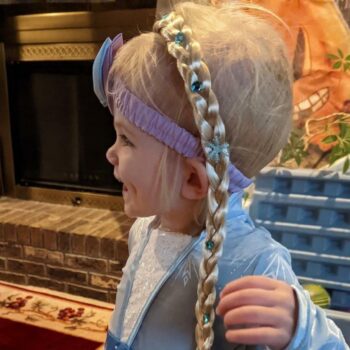Iron, Hair and the Fairer Sex

By: Holly L. Thacker, MD • Posted on November 23, 2022
Through-out the female life cycle there are some special demands for iron. Iron is a mineral that both sexes need in order to carry oxygen through out the body. Iron deficiency can lead to extreme fatigue and feeling lightheaded, as well as a painful tongue and pale skin color.
Menstruation, giving birth and breastfeeding increase the need for iron across the female lifecycle. Many times low iron in women is blamed on the female lifecycle. However, women with heavy menses who are over age 40 should be evaluated for occult losses of blood via the GI tract such as ulcers, stomach cancer, celiac disease, colon polyps and colon cancer.
How Much Iron Do Females Need?
Our bodies need iron for blood cell development, brain development, and iron is integral to producing all cells in the body.
- Menstruating women need a whopping 18 mg of iron daily
- Postmenopausal women should aim for 8 mg daily
- Children between the ages of 4-8 need about 10 mg daily
- Babies and toddlers who are growing rapidly sometimes outstrip their iron stores particularly if they are not eating iron fortified cereals and/or red meat regularly.
- Infants between the ages of 7-12 months need 11 mg daily
- Toddlers between the ages of 1-3 need 7 mg daily
Symptoms of Iron Deficiency

As a mother, a women’s health physician and being blessed with an active, toddler granddaughter and two pregnant daughter-in-laws, iron is on my mind!

Toddlers are the age group that tend to ingest the least iron. When I noticed some pallor and hair thinning in my 2-year-old granddaughter Artemis, I started to think about her iron ingestion.
Other than eating occasional bacon (not as high in iron as red meat), she has become a picky eater and doesn’t want to always eat iron-fortified cereals, oatmeal (4-6 mg of iron), tofu or meat. She, like many females, cares about her hair and likes to wear her “Elsa hair” extensions.
Hair follicles require iron and protein for growth to produce strong, healthy hair. One of the first signs of inadequate iron is poor hair growth. Blood counts and anemia happen after all iron stores are exhausted.
7 Tips to Add Iron Rich Foods in Your Diet
If you have picky eaters in your family or if you struggle to ingest enough protein in your diet, here are a few tricks and recipes I learned over the years.
- Add ground red meat, milk and noodles in a creamy sauce with some spinach.
- Spinach can be slipped into pancakes, baked potatoes with sour cream and chocolate cake - that I told my sons when they were young was “Forest Chocolate Cake!”
- Eat calcium rich foods like milk and cheese at a different time from eating iron-rich foods. Studies have shown that calcium can inhibit iron absorption.
- Pair vitamin C rich foods with iron rich foods to help aid in the absorption of iron. Examples of vitamin C rich foods are: orange, kiwi, lemon, lime, squash, cauliflower, guava, tomato and potato. If your physician prescribes an iron supplement, he or she frequently adds to “Take with a sip of orange juice!”
- Whole-grains such as whole wheat, brown rice and quinoa are good sources of iron, offering dietary fiber and B-vitamins.
- Most toddlers enjoy fruit, but only a few fruits contain iron like raisins, dried apricot halves, red tart cherries (0.71mg), diced watermelon (0.36 mg in a cup) and prunes (0.36mg).
- Casseroles containing beans are a wonderful source of iron. White beans are one of the richest sources of iron, offering 8 mg per serving. Use cast iron cookware to increase the heme iron content of the meal.
- Heme iron is only available via animal products such as meat and seafood.
- Non-heme iron comes from fortified foods (like cereals) and non-animal sources including yummy dark chocolate.
More Iron-Rich Foods and Their Iron Content
- 3 ounces dark chocolate: 7 mg
- 3 ounces steak: 2.5 mg
- 3 ounces lamb: 3 mg
- 3 ounces chicken breast: 1.1mg
- 2 cups cannellini beans: 4 mg
- 1 egg: 1.68 mg
- 3 tablespoons fortified infant oat cereal: 5 mg
- 3 ounces chicken liver: 9.9 mg
- ¼ cup cooked spinach: 2 mg
- 2 ounces chickpea pasta: 3 mg
- 2 cup raw tofu: 3.2 mg
- 2 cup cooked lentils: 4 mg
Too Much Iron
Occasionally, people can have iron overload and have hemochromatosis which occurs in about 1 in every 200 persons and is usually evident in males before females because of menstruation, childbirth and lactation.
Before taking an iron supplement it is best to check with your physician. Same goes before giving iron gummy supplements to your picky toddler, check with your pediatrician or family physician.
Be Strong, Be Healthy, Be in Charge!
-Holly L. Thacker MD
About Holly L. Thacker, MD, FACP
Holly L. Thacker, MD, FACP is nationally known for her leadership in women’s health. She is the founder of the Cleveland Clinic Specialized Women’s Health Fellowship and is currently the Professor and Director of the Center for Specialized Women’s Health at Cleveland Clinic and Lerner College of Medicine at Case Western Reserve University. Dr. Thacker is also the Executive Director of Speaking of Women’s Health and the author of The Cleveland Clinic Guide to Menopause. Her special interests and areas of research including menopause and related medical problems including osteoporosis, hormone therapy, breast cancer risk assessment, menstrual disorders, female sexual dysfunction and interdisciplinary women’s health.
women's health, hair loss, hair loss treatment, iron, foods for hair loss, foods with iron, diet, nutrition, midlife, low iron
Related Articles
- Foods High in Iron
- Hair Loss in Women Treatment Guide
- Combing Through Hair Loss Treatments
- Hair Loss, What’s A Woman To Do?
- New Mom’s Food Fight: Breast Milk vs. Formula
- Women's Health and Celiac Disease
- Restless Leg Syndrome at Night
- New Therapies Offer Hope for Minimizing Hair Loss in Midlife Women
- Preparing for Hip and Knee Replacement
